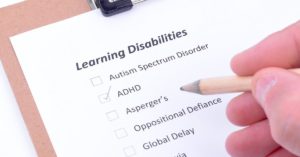Diagnosing a Student With Disabilities Is Generally Better if Done Earlier Rather Than Later

Some recent studies were designed to learn whether or not special education services are actually helping students with disabilities learn more than if they had not received those services. Today, this is being questioned by economists as well as educators. Presently, more than fourteen percent of the students in America’s public schools receive special education services at a cost of almost 100 billion dollars annually. Consequently, various studies have been done examining the efficacy of the special education costs as well as the efficacy of the services provided. This has made several studies available to us. It is my intention to examine the academic results that dealt with how well the classification of students has worked, and when the best results were achieved.
A report issued in 2015 in North Carolina found that third grade enrollment in special education is critical, because transitioning out of special education decreases significantly after grade 3. After that grade level only one fourth of this population are declassified. Having a child classified prior to third grade increases the effectiveness of providing the special education services as early as pre-k. Some studies estimate that providing special education services as early as pre-k to 4, can decrease later classification by almost 40%, or expedite transitioning out of such a class much better. Some studies have tried to determine the optimum time evaluating a child suspected of being academically, emotionally, or behaviorally disabled.
It has been a difficult area to evaluate as there has been a reluctance to place some of the students into a study group that does not receive the services. In New York City, economists and educators cleverly avoided this problem. They were able to compare students’ academic performance before they were diagnosed and after they began receiving services. Generally, they found that test scores for students with disabilities were higher after the diagnosis by as much as 18% in mathematics between those students with disabilities and those without disabilities. A 16% increase was found in reading. Dr. Amy Ellen Schwartz, a professor at Syracuse University said: “Their performance jumps up compared to peers with learning disabilities who are not yet diagnosed” and continue to be in the general education population. The study, entitled “The Effects of Special Education on the Academic Performance of Students with Learning Disabilities,” was published in January, 2021 in the Journal of Policy Analysis and Management. It drew the attention of many educational researchers. It is one clear piece of evidence that providing students with disabilities special education services helps to contribute positive outcomes to their educational achievement.
While the above New York study dealt with students who had specific learning disabilities, it primarily dealt with mathematics and reading, on students with dyscalculia, dysgraphia, and dyspraxia. However, it is expected that receiving special education services will prove to be similarly effective for other disabilities.
 The study was limited to students who were diagnosed with learning disabilities between fourth grade and seventh grade, since they were able to use data from annual state examinations.
The study was limited to students who were diagnosed with learning disabilities between fourth grade and seventh grade, since they were able to use data from annual state examinations.
Students who were diagnosed in the earlier grades (4th or 5th) scored better than students who were diagnosed in later grades (6th or 7th). This could have been due to other factors as well as the provision of special education services (such as maturation, or the stage of the disability in the older sixth or seventh grade students).
Another finding from the study was that race may also be a factor. Asian students, who consisted of only 6% of the students with disabilities studied (and made up 15% of the general student population) indicates that they are less likely to be diagnosed than their non-Asian peers. This can be due to other factors. However, it could indicate that parents of Asian children are reluctant to have their children be classified as having special needs.
While the Black population of the city consists of 31% of the total student population, they were 35% of the study group. This could lead to at least two possible conclusions: (1) there are some black children who are should not be classified as in need of special education (consequently, such a classification did not help them), and (2) some black children are being diagnosed properly for mild learning disabilities, but the services provided did not have a significant effect on the children with mild cases.
Similar effects were found for Hispanic children, who comprise almost 39% of the population, but constituted almost 44.5% of the study; poor students (76.7% of population) and 81.7% of the study; and foreign-born students (15% of the population) and 16.7% of the study.
From an outcome perspective, girls and Asians achieved higher scores than their non-feminine or non-Asian peers. The researchers suggest that the strong outcomes for girls and Asians and the relatively poor outcomes for black boys warrant that further studies should be done across demographic groups. These differences may raise concerns that racism may be driving over-classification which suggested that Blacks are under-represented.
There was a similar, but smaller, study done in 2019 in Kentucky. This study found the academic benefits for students with disabilities doubled the benefits found in the New York study. A 2002 study of Texas students basically replicated the results from the New York study.
These studies, which deal with when the classification is made (age or grade level) and the subsequent academic effects have been relatively rare during the almost half of century that has passed since the 1974 enactment of The Individuals with Disabilities Education Act (IDEA). Since these studies seem to be evidence that special education classification and services improve academic outcomes for students with disabilities indicates that further studies should be done to look at the types of special services and accommodations which work best with the different special education categories. In addition, we should examine why groups such as Blacks, Hispanics, poor, and foreign-born are over-represented in the study groups.
Dr. Schwartz, the author of the New York study, is presently studying children with disabilities in Massachusetts.
Jill Barshay is a staff writer and editor at The Hechinger Report. She provided the instigation for the details herein contained.

